Latest questions:
Trending questions:
Hot questions:
clean energy like solar power and wind power are substitute to Hydro power.
7 answers
The key trends in the energy sector are clear: digitalization, decentralization....and of course decarbonization
Solar and wind are no magic solution for the energy transition. Even though the development of solar and wind can only be beneficial, one should not forget that those energy sources remain intermittent. They are weather-dependent by nature, You obviously do not have solar energy at night and even if you interconnect a significant number of wind farm over broad geographies, it often happens that very large regions find themselves with poor wind conditions at the same time. This means that you have to add significant storage capabilities to make sure that you have power available when its is needed to compensate for Solar/Wind intermittency, even for nascent hybrid solar/wind installations. This adds up to the cost of wind very significantly. That is why you need to compare the overall cost for "Energy mobilization" when you want to really compare energy sources in order to take into account this kind of necessary add-on.
Hydropower has very significant advantages. Hydropower, even if you have some GHG emissions in large reservoirs, remains a very clean and cheap energy source. PSP hydropower plants actually allow to store significant quantities of energy and are part of the solution as well. Large dams also have drawbacks of course, in particular in term of potential ecosystem perturbation and population relocation. Let's not forget that hydropower dams also play a key role in managing flood threats in many regions of the world. One should never oppose the different low-carbon energies - Solar, onshore and offshore wind but also nuclear energy - as such as they all have their advantages and drawbacks. Depending on your natural resources, geographies, geopolitics, existing grid etc., one may make more sense than the other.
The most important point remain to transition to a low-carbon future with less Oil & Gas. That is what we push for at Carbonexit Consulting on a daily basis.
No matter what type or method of generating electrical power we use, each one has a major disadvantage. Hydro-electric covers a lot of land; covering hundreds of square miles of land when a dam is installed and and produces very little power in return. For example, Hoover Dam, one of America's largest dams, produced Lake Mead, a lake that covers over 247 square miles of surface area, has a maximum depth over over 590 feet, and is 110 miles long. All of that to produce a mere 2,080 MW. Everyone seems to be concerned about the safety of nukes, but have not considered the loss of life that would occur if an earth dam (or even a concrete dam like last week in Texas) were to break (see Teton Dam failure in June 1976). There is one US earth dam just 9 miles upstream of a metropolitan area (600,000 people). If the dam were to break at 3 am, it would cover the metro area with a huge wall of water within just minutes. Steep canyon walls on each side of the downstream river from the dam would channel all of the water into the metro area, killing hundreds of thousands.. Compare Hoover Dam with its 19 turbines (2,080 MW). to a typical nuke unit that produces 1,250 MW. The largest Coal-fired units produce 1,300 MW each, the amount of coal burned to produce that is highly dependent upon the coal quality, boiler efficiency, etc, but can use nearly one train car load of coal every hour (~250,000 pounds of coal). While recent EPA regulations have mandated clear air emissions, there is still a bit of nasty gasses expelled into the environment. The huge wind turbines only produce about 1 MW each, so there has to be a lot to produce enough electricity to power a large city, are so ugly, and require wind to work. The answer for the time being is nuclear power. The American liberals (Hollywood, and some news organizations) flood the public with disinformation concerning the nuclear power plant threat, making American's fear what they think they know about nuclear power plants. I have worked in 39 of America's nukes (including 3-Mile Island) since 1984, and know first-hand how safe they are. I have also worked in over 200 fossil-fueled plants (goal, gas-fired), and even a half dozen garbage burning power plants over the years. In short, I am a power plant inspector.
France is 90% nuclear power and the public loves it (generally, not specifically), mainly because their media gives the public correct information. I am also a licensed NDT Level III examiner in Industrial Radiography and have worked with radiation intimately for over 30 years. It is like anything else that is dangerous, you have to respect it and understand it before you work with it. Nuclear power is like driving a car, it can be safe or usafe, depending on whether one practices safe rules while operating them. American nuclear power plants have numerous redundant systems to prevent reactor melt-down (unlike the China Syndrome movie). Their safety rules are insane! When the public is educated, they do not have a problem with nuclear power. The main reason why the French have such a successful and safe electric power producing system is because of their intense operator training program and the fact that they have one reactor manufacturer, and one plant design for all of their units. This makes perfect sense.
To summarize, all of our current forms of producing clean, environmentally friendly, reliable, cheap, and consistent electric power have advantages and disadvantages. Of all the various forms of producing power, when safely managed, nuclear is the most-efficient, cheep (unless they have massive cost over-runs during construction and have high interest payments on their loans) and environmentally friendly option we currently have available.
Our existing hydro power resources are a complimentary part of the mass deployment of wind, solar, biofuels, batteries, hydrogen and even nuclear power in zero carbon power. Hydro output is easily regulated, can help balance the variable output of renewables and the fixed generation of nuclear and may increase water utilization. Co-locating RE with hydro and also utilizes existing grid resources, increasing economic returns of both.
In fact, it is pretty true. Although we did not think of it and plan it in our earlier days, it is still not too late to lean on them for a sustainability in the future. Having seen the ills of fossil fuel generation, many countries took shelter in these two options - Solar & Wind. The technological progress in both of them has been so exciting and AFFORDABLE that we need to adopt them in all its earnest.
Having said that and published a couple of paper on the topic, I wish to clarify that Hydro is not free of GHG. In fact, methane generation due to submergence is 21 times more potent than carbon dioxide. More over, they do have more serious issues in terms of land and vegetation cover. The Hydro program along the Himalayan track is abandoned due to intensity of frequent quakes.
What is more important in the present context is that the current 'Grid Network' needs to be verified for taking up the additional load of Solar & Wind.
As the technologies improve, we will perhaps have more options than what is right now available on strengthening the options for better sustainability in the future.
A rarely considered but also very salient point is not simply generation of power but the transmission of that power. With solar there is a massive amount of loss in collected potential and the conversions to and from AC to DC back to AC for consumer application. Hydro allows for AC generation but when the source is too far from a first leg consumer or distribution grid then it also suffer transformation loss to retain the efficiency of transport over distance.
Wind is also an AC generation source but where applied with reliable winds it is distant from first leg consumers, so again transformation and loss are necessary.
Over the next several years as interest in improving these technologies I believe there will be sufficient gains in the generation so as to improve micro-generation stations. Large scale commercial utility generation of power is an old and heavily burdened cost in safe, clean production as well as regulatory and infrastructure requirements. Home solar installations are making a dent in daily electricity demand in the southwest of the US and the model is catching on rapidly. Wind generation for homes and farms are beginning to reach viable states in the midwest and east coast region. As consumers drive the rest of the markets in the US it follows that consumers will push for green-er energy sources and some level of energy independence from the utilities. Small, clean generation capacity for individual homes can reasonably reduce utility dependence by 30% today, in 5 years it could be 50 to 70%. That is a game changer and doesn't require national infrastructure rebuilds, grid upgrades and utility rate hikes.
The increasing use of clean and sustainable energy sources like solar power, wind power, hydrothermal and Biofuels is not only a substitute for hydroelectric power but also helps reduce the reliance on coal and nuclear electrical power production which improves our environment and may reduce global warming concerns.
There is a necessity for families & individual to have an alternative power source, independent fro Power corporations of federal facilities...it's not an option when for any type of reasons, prices raise for better profitability and renewal of Hydro related power investments.
So education and training on solar or any substitute that allow a community unit of 3, 5 10+ people to sustain their needs is a must have an not an option.
Do I need to mention changes must occur now, if we intend to live a bit longer as a specie. Clean sustainable, affordable, maintainable by your own hands must occur.
let's stop being lazy and stop procrastinate. Buidling alternate future is a necessity. My humble opinion.
Water turbines on your field, same with wind turbines...no longer a dream..engineers have made it, buy it, install it, and finance it...1 household = 17 to 25 000 $ investment...come on..and you can unplug power corp from your billing statements...doubts, put them has a back up plan if you want.









